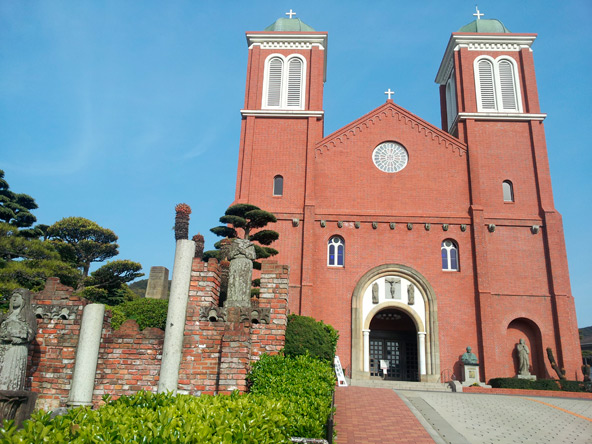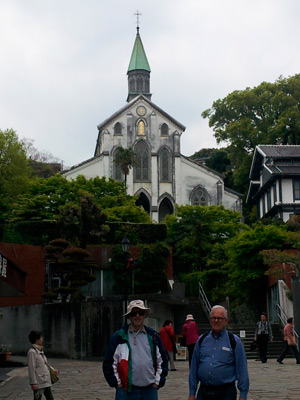
This is part five in a series of blogs from Dr. Asher’s trip to Japan.

In the more than 50 years he had been here, had he seen Catholicism grow in Japan? I was talking with Jesuit Father Jose Aguilar, who lived at the Jesuit Residence by the 26 Martyrs Museum in Nagasaki. He is from Guadalajara.
Now in his 80’s, Fr. Aguilar is spry and alert in mind and body. “No,” he answered, “the number has decreased.” We expressed amazement.
“I don’t know,” he said, “I pray to our Blessed Mother, but I don’t know…” his voice trailed off. Yes, the blood of martyrs is the seed of the Church, he agreed, acknowledging some 250,000 Japanese martyrs between 1597 and 1873, but he had no explanation.
However, he had some interesting and proud history to share. The Church at the Museum site is not actually named “26 Martyrs” as everyone calls it. That is properly the name of the original Nagasaki Cathedral, also known as the Oura Cathedral built by Fr. (later Bishop) Benard Pettijean in 1864. The church at the 26 Martyrs Museum is named after San Felipe de Jesus, OFM, who came from Mexico City.
Felipe de las Casas tried and left the Franciscans. His was a reluctant vocation, but after attending to family business interests in the Philippines for a time, he entered the order again, and began his studies for the priesthood. He was then required to set out for Mexico to be ordained, but a storm blew the ship off course, and it foundered on a Japanese shore. The timing of the shipwreck was unfortunate, for soon thereafter, the government decided to enforce its laws against anyone being Catholic, and religious members of the ship were taken to Nagasaki for execution.
 Executions were conducted by having the condemned stand on a cross beam,. Their arms were secured by manacles on another beam, and an iron collar held them against the upright pole. They were then speared through both sides of their chest, and death came quickly. Fr. Aguilar related that the beam Felipe was standing on broke, and he was choking from the iron collar. The order for his immediate execution was given, thus he became the first martyr for the faith in Japan, and Mexico’s first martyr. On June 8, 1862, Pope Pius IX declared him a saint — Mexico’s first. Today he is the patron saint of Mexico City.
Executions were conducted by having the condemned stand on a cross beam,. Their arms were secured by manacles on another beam, and an iron collar held them against the upright pole. They were then speared through both sides of their chest, and death came quickly. Fr. Aguilar related that the beam Felipe was standing on broke, and he was choking from the iron collar. The order for his immediate execution was given, thus he became the first martyr for the faith in Japan, and Mexico’s first martyr. On June 8, 1862, Pope Pius IX declared him a saint — Mexico’s first. Today he is the patron saint of Mexico City.
Prayers to San Felipe figured prominently during the Cristero War in Mexico, 1926-29. And when it came time to build the 26 Martyrs Museum and Shrine, Fr. Aguilar relates that many Mexican tradesmen and artisans came to help in the building. When completed, more than 600 Mexican citizens came for the dedication in 1962.
Father should know, he was put in charge of finding places for the many guests, and he laughs relating that he had to explain to “… all those fine Mexican ladies…” it would be necessary for them to sleep on futons that would be on tatami mat floors, in traditional Japanese style, since there were no other accommodations available for so many.
Alas, the beautiful little church of San Felipe is not well attended today. We went to the Saturday vigil Mass celebrated by Fr. Aguilar in Spanish. Besides us, there were two American Hispanic ladies and a Japanese lady who was trying to learn Spanish.





